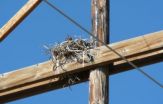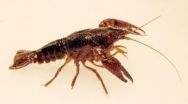(Press-News.org) Recent research has suggested that women play better with others in small working groups, and that adding women to a group is a surefire way to boost team collaboration and creativity.
But a new study from Washington University in St. Louis finds that this is only true when women work on teams that aren't competing against each other. Force teams to go head to head and the benefits of a female approach evaporate.
"Intergroup competition is a double-edged sword that ultimately provides an advantage to groups and units composed predominantly or exclusively of men, while hurting the creativity of groups composed of women," said Markus Baer, PhD, lead author of the study and associate professor of organizational behavior at Olin Business School.
The study suggests that men benefit creatively from going head-to-head with other groups, while groups of women operate better in less competitive situations. As intergroup competition heats up, men become more creative and women less so.
"Women contributed less and less to the team's creative output when the competition between teams became cutthroat, and this fall-off was most pronounced in teams composed entirely of women," Baer said.
The findings are counterintuitive because previous research has shown that women generally are more collaborative than men when working in teams.
"If teams work side by side, women tend to perform better and even outperform men – they're more creative," Baer said.
"As soon as you add the element of competition though, the picture changes. Men under those circumstances gel together. They become more interdependent and more collaborative, and women just do the opposite.
"So, what is true for non-competitive circumstances, flips when it gets competitive," he said.
The study should serve as a caution to managers attempting to use competition among teams to spur creativity. It shows that intense competition can erase the creative advantage that women tend to enjoy over their male counterparts.
Markus Baer discusses his research on how competition kills creativity for women working in groups.
The simple lesson, Baer said, is that competition should not be used in all situations to stimulate creativity. It's not going to help women and probably hurts their creativity, so managers should look for different methods of motivation.
"Given that women represent a growing portion of the workforce, using competition as a means to enhance the creativity of groups, regardless of how they are composed, implies that the creative potential available to businesses is seldom fully realized," the study contends.
Baer emphasizes that nothing in his study suggests women are inherently bad at competition. Rather, it shows that gender stereotypes continue to influence behavior in the workplace.
"It's not that women stink at competing, it's that the way society views women and the way we view competition, gender specific, has an impact and that impact is observable in the lab as well as in the field," Baer said. "It changes behaviors and outcomes."
Published in the May-June issue of the journal Organization Science, the study is titled "Intergroup Competition as a Double-Edged Sword: How Sex Composition Regulates the Effects of Competition on Group Creativity."
Findings are based on an experiment involving male and female college students working together in groups, as well as data gathered in the field from 50 teams of scientists, engineers and technicians at a global oil and gas company.
INFORMATION:
Co-authors include Abhijeet K. Vadera, PhD, of the Indian School of Business, Hyderabad, India; Roger T. A. J. Leenders, PhD, of the Tilburg School of Social and Behavioral Sciences, Tilburg University, The Netherlands; and Greg R. Oldham, PhD, of the A. B. Freeman School of Business at Tulane University.
Link to paper: http://pubsonline.informs.org/doi/abs/10.1287/orsc.2013.0878
Want to kill creativity of women in teams? Fire up the competition
2014-08-11
ELSE PRESS RELEASES FROM THIS DATE:
New study: Ravens rule Idaho's artificial roosts
2014-08-11
A new study by the Wildlife Conservation Society (WCS), U.S. Geological Survey (USGS) and Idaho State University (ISU) explored how habitat alterations, including the addition of energy transmission towers, affect avian predators nesting in sagebrush landscapes.
Researchers compared nesting habitat selection between Common Ravens and three raptor species commonly found in sagebrush ecosystems: Red-tailed Hawks, Swainson's Hawks, and Ferruginous Hawks.
Using the data from their field research and reviewing historical data from other studies, the scientists developed ...
Can fiction stories make us more empathetic?
2014-08-11
Empathy is important for navigating complex social situations, and is considered a highly desirable trait. Raymond Mar, a psychologist at York University in Canada, discussed how exposure to narrative fiction may improve our ability to understand what other people are thinking or feeling in his session at the American Psychological Association's 122nd Annual Convention.
Exposure to stories
Many stories are about people--their mental states, their relationships—even stories with inanimate objects, may have human-like characteristics. Mar explains that we understand stories ...
Julio embarking on weakening trend
2014-08-11
The Central Pacific Hurricane Center has issued its 30th warning on Julio today at 1500 GMT. Julio's position at this point is 395 miles northeast of Honolulu, Hawaii moving northwest at 8 knots per hour. Julio is moving toward the northwest near 9 mph, 15 km/h. Maximum sustained winds are near 75 mph, 120 km/h, with higher gusts. Julio is expected to weaken slightly over the next 48 hours, down to tropical storm strength by tonight.
At present, hurricane force winds extend outward up to 25 miles, 35 km, from the center, and tropical storm force winds extend outward ...
Genevieve Downgraded to a tropical storm
2014-08-11
Once Super Typhoon Genevieve has now been downgraded to a tropical storm. The storm is located approximately 819 nautical miles west-northwest of Midway Island. It is currently tracking northwestward at 8 knots per hour over the past six hours. Maximum significant wave height is 32 feet. Maximum sustained winds 70 knots gusting to 85 knots, with winds of 34 knots or higher occur within 80 to 105 miles of the cente,r and winds of 64 knots or higher occur within 15 miles of the center. No landmasses are currently threatened by this storm.
Genevieve is moving northwest ...
Southfork and Staley Complex fires in Oregon
2014-08-11
The Southfork Complex fire began with a lightning strike on July 31, 2014. The complex of Murderers Creek South fire and the Buck Fork fire is located 20 miles southwest of John Day, Oregon and has affected 62,476 acres to date. The fire area experienced a shift in direction of the prevailing winds Sunday. There were short up-slope, up-canyon runs. At present there are 798 personnel fighting this fire complex.
Projected outlook for this fire complex in the next twelve hours sees continued fire spread to to the north toward Dayville, Oregon as well as continued fire ...
Devil's Elbow Complex in Washington state
2014-08-11
The Devil's Elbow Complex is four wildfires that are located on the Colville Indian Reservation in northeastern Washington. They were detected on August 3, but were likely ignited by lightning that passed through the area on August 2.
Three fires are in the San Poil River Valley, approximately 10-12 miles north of the town of Keller, WA. These are the Cub Creek Fire (165), the Central Peak Fire (160), and the Deadhorse Fire (164). They are burning timber, grass, brush, litter, and heavy slash that resulted from a local wind storm two years ago. The terrain is very steep ...
Synthetic molecule makes cancer self-destruct
2014-08-11
Researchers from The University of Texas at Austin and five other institutions have created a molecule that can cause cancer cells to self-destruct by ferrying sodium and chloride ions into the cancer cells.
These synthetic ion transporters, described this week in the journal Nature Chemistry, confirm a two-decades-old hypothesis that could point the way to new anticancer drugs while also benefitting patients with cystic fibrosis.
Synthetic ion transporters have been created before, but this is the first time researchers have shown them working in a real biological ...
NIST therapy for ultraviolet laser beams: Hydrogen-treated fibers
2014-08-11
To make a better optical fiber for transmitting laser beams, the first idea that comes to mind is probably not a nice long hydrogen bath.
And yet, scientists have known for years that hydrogen can alter the performance of optical fibers, which are often used to transmit or even generate laser light in optical devices. Researchers at the National Institute of Standards and Technology (NIST) have put this hydrogen "cure" to practical use, making optical fibers that transmit stable, high-power ultraviolet laser light for hundreds of hours. NIST scientists expect these hydrogen-treated ...
Stanford researchers uncover cancer-causing mechanism behind powerful human oncogene
2014-08-11
A protein present at high levels in more than half of all human cancers drives cell growth by blocking the expression of just a handful of genes involved in DNA packaging and cell death, according to a new study by researchers at the Stanford University School of Medicine.
The researchers found that the protein, called Myc, works through a tiny regulatory molecule called a microRNA to suppress the genes' expression. It marks the first time that a subset of Myc-controlled genes has been identified as critical players in the protein's cancer-causing function, and suggests ...
Blood cells are a new and unexpected source of neurons in crayfish
2014-08-11
Researchers have strived for years to determine how neurons are produced and integrated into the brain throughout adult life. In an intriguing twist, scientists reporting in the August 11 issue of the Cell Press journal Developmental Cell provide evidence that adult-born neurons are derived from a special type of circulating blood cell produced by the immune system. The findings—which were made in crayfish—suggest that the immune system may contribute to the development of the unknown role of certain brain diseases in the development of brain and other tissues.
In many ...







